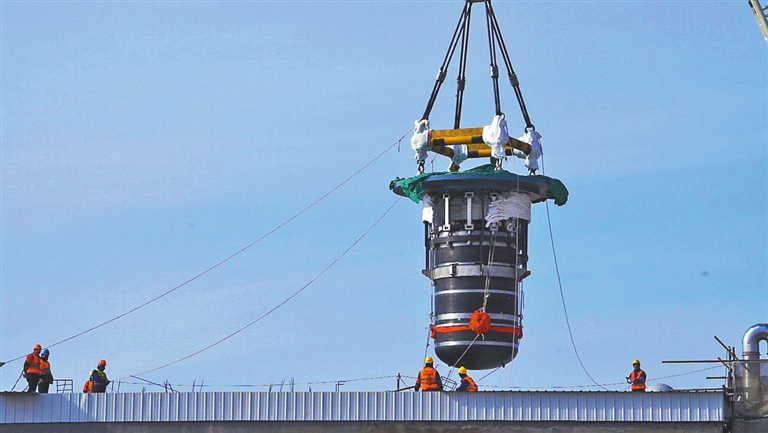
CHINA has reached a pivotal milestone in advanced nuclear energy, achieving the world’s first successful conversion of thorium into uranium-233 within an operational molten salt reactor. This accomplishment marks a critical step in validating the thorium fuel cycle, a promising path toward safer and more sustainable nuclear power, and solidifies China’s leading position in this cutting-edge field. The breakthrough was confirmed through key physical parameter data for protactinium-233, which verified the establishment of a complete nuclide conversion chain from thorium-232 to uranium-233. This process, known as transmutation, is the foundational principle of the thorium fuel cycle. The experiment was conducted in a 2-megawatt thermal (MWt) liquid-fueled thorium molten salt reactor (TMSR) located in Wuwei City, Gansu Province, a project led by the Shanghai Institute of Applied Physics (SINAP) of the Chinese Academy of Sciences (CAS). The pursuit of this technology is driven by China's dual goals of energy security and sustainable development. “Nuclear energy, characterized by its high energy density, near-zero carbon emissions, and independence from seasonal variations, is a clean, low-carbon, safe, and efficient energy source,” said SINAP deputy director Cai Xiangzhou. However, with the nation's heavy reliance on imported uranium, developing an indigenous fuel supply is of strategic importance. The thorium molten salt reactor represents a compelling solution. Dai Zhimin, director of SINAP, highlighted thorium’s distinct advantages: “China possesses abundant thorium reserves. Furthermore, thorium-fueled reactors feature a negative temperature coefficient of reactivity, which inherently mitigates the risk of radioactive release.” He added that this technology generates less high-level waste with significantly shorter radioactive half-lives, simplifying long-term disposal. Representing a fourth-generation technology, molten salt reactors use liquid salt as both a fuel carrier and coolant. This design confers inherent safety features, including water-free cooling, low-pressure operation, and high-temperature output, making them “internationally recognized as the most suitable reactor type for thorium resource utilization,” according to Dai. The high-temperature output also enables deep integration with other industries, such as hydrogen production and chemical engineering, supporting the development of a multi-energy, complementary low-carbon system. This achievement is the culmination of a focused national effort. The CAS launched the TMSR program in 2011 to develop core technological capabilities. Construction began in 2020, with the reactor achieving criticality and full-power operation by mid-2024. After receiving the world’s first experimental license to load thorium fuel, the first loading was completed in October last year, creating the globe's sole research platform dedicated to molten salt reactors and the thorium-uranium fuel cycle. The project's success was a collaborative triumph. "The program brought together nearly 100 domestic research institutions, universities, and industrial companies to overcome key challenges in reactor design, critical materials, and safety," Cai noted. He emphasized that the team pioneered crucial technologies, including the preparation process for nuclear-grade thorium-based fuel salt. Critically, over 90% of the reactor's components are domestically produced, with 100% localization of key parts, establishing a fully independent supply chain. Looking ahead, SINAP plans to collaborate with leading energy enterprises like the State Power Investment Corporation to build a comprehensive industrial ecosystem. “Our goal is to complete the construction of a 100-MWt prototype by 2035 and realize commercial-scale application,” Dai said. This would accelerate the transformation of this pioneering technology into a safe, reliable, and domestically controlled energy solution for China. (SD-Agencies) | 
